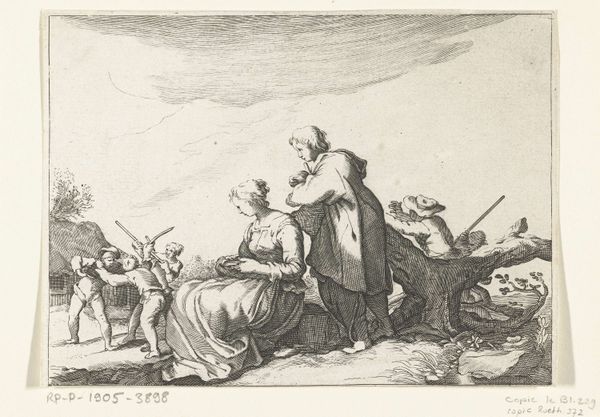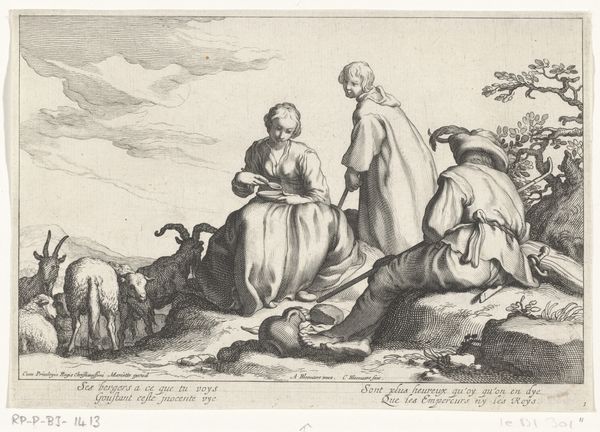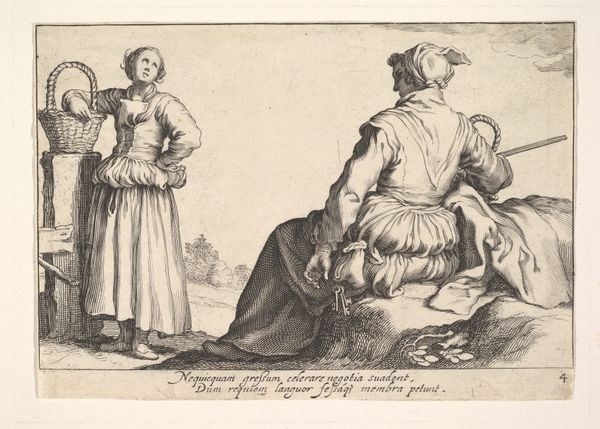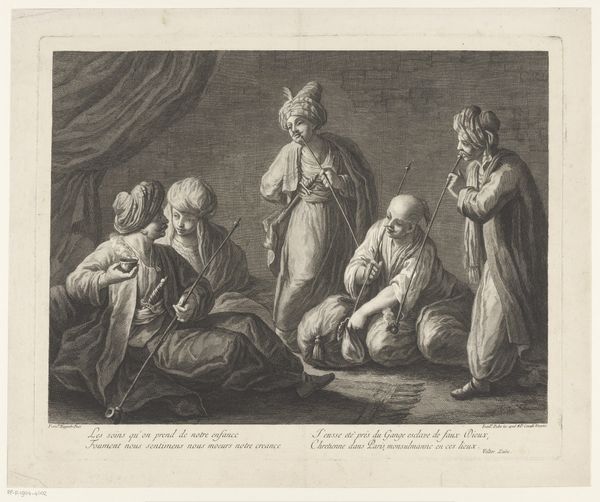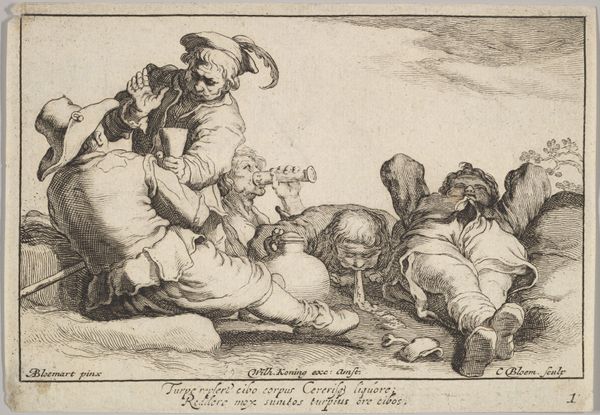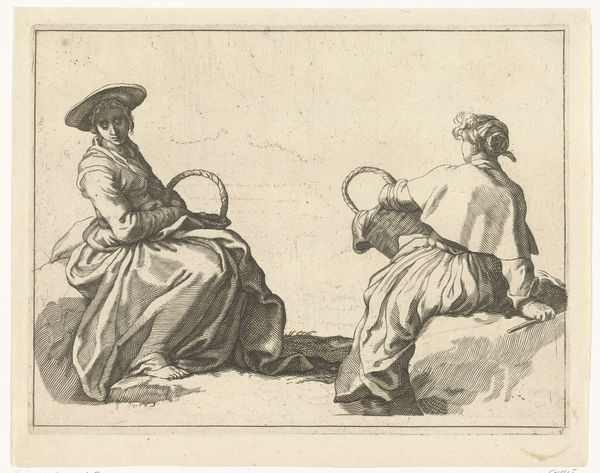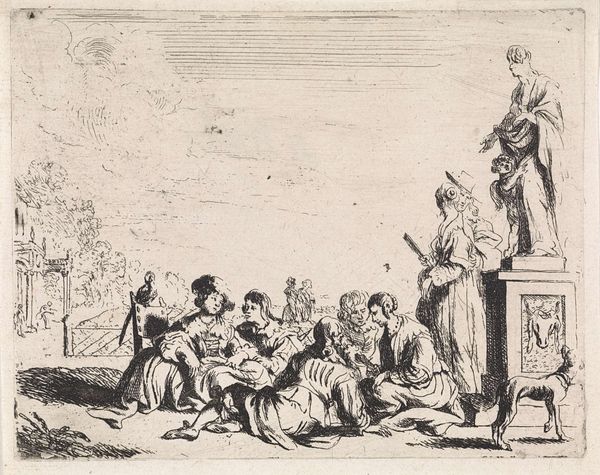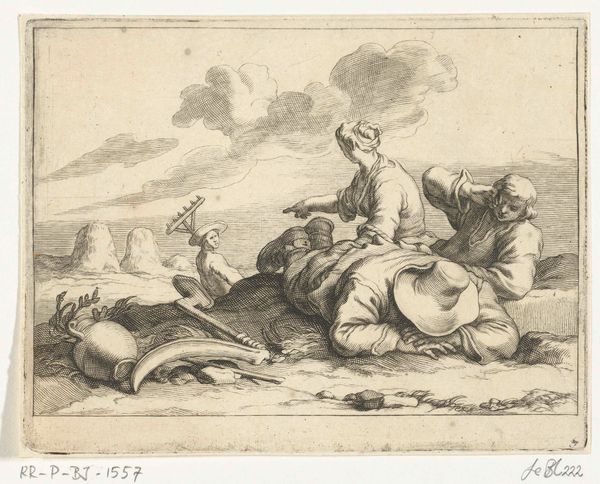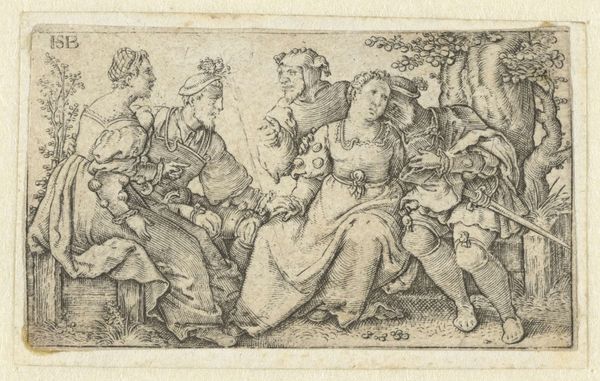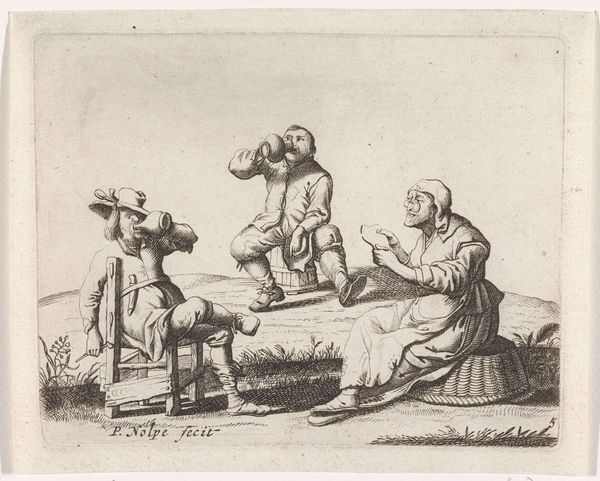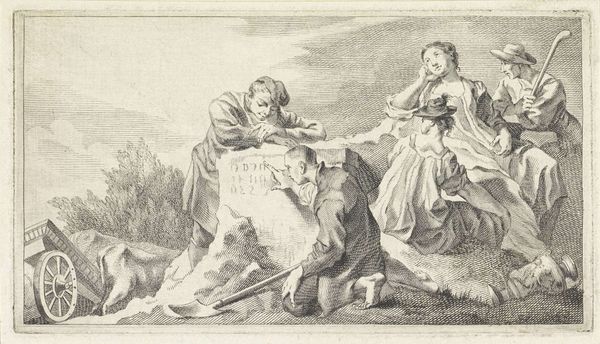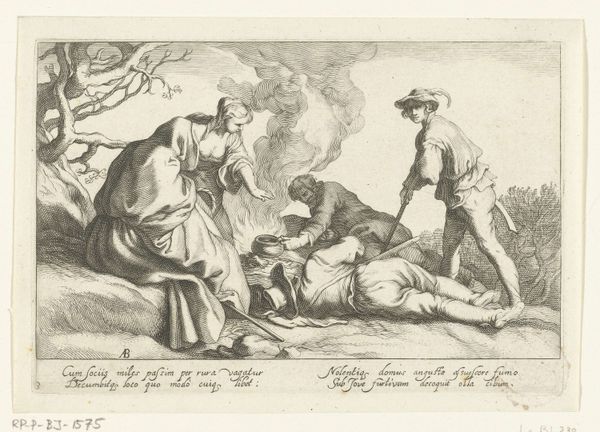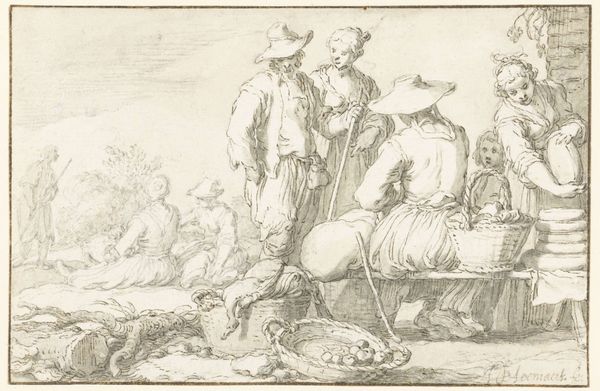
print, engraving
#
narrative-art
#
baroque
# print
#
pen sketch
#
pen-ink sketch
#
genre-painting
#
history-painting
#
engraving
Dimensions: height 125 mm, width 186 mm
Copyright: Rijks Museum: Open Domain
Curator: Here we have "Vechtende jongens," or "Fighting Boys," an engraving attributed to Frederick Bloemaert, likely created sometime between 1632 and 1670. It's part of the Rijksmuseum's collection. Editor: The first thing that strikes me is the contrast between the calm figures on the left and the... chaotic energy on the right. There’s a definite spatial division, a compositional tension pulling me in two directions. Curator: Exactly. Bloemaert masterfully depicts the everyday lives of people. This genre scene isn't just about the fight; it captures broader societal elements. Observe the seated woman and man; they anchor the narrative and give us clues as to social stratification in the countryside. Editor: I am fascinated by how the artist uses line and shadow. The way Bloemaert builds up tone to delineate the fabric of clothing, creating form with what must be so few, economical marks, is impressive. Look at the script beneath, also – an essential element, I think, contributing a layer to this society-making. Curator: Those Latin verses contextualize the scene, framing it as a moral tale or proverbial commentary. This adds a layer of intellectual engagement beyond mere visual appeal. What are we supposed to take away from the 'moral' of the story - the cost of too much 'potu'? What lessons is Bloemaert teaching to viewers of the time? Editor: It does add complexity. Are we invited to simply witness the brawl as entertainment, or should we interpret these children, and their wild gestures, as expressive figures - their postures forming an attitude to Baroque aesthetics? Curator: It underscores art's purpose during that era. Works had to convey messages and embody values reflecting broader philosophical and political concerns. It reflects on family life but also political turbulence and instability. The fighting, as depicted here, then stands for the greater turmoil outside of rural family. Editor: Considering only line and space here gives it another view again, where fighting itself becomes texture: small, agitated marks standing up against broader fields of quiet tone, almost separate, not only physically but visually, and aesthetically. Curator: Through examining "Vechtende jongens," we realize prints were much more than decorative; they captured the zeitgeist of early modern Netherlands. Editor: Yes. Reducing an idea to tone in black-and-white seems to speak of broader struggles. And that is powerful.
Comments
No comments
Be the first to comment and join the conversation on the ultimate creative platform.
